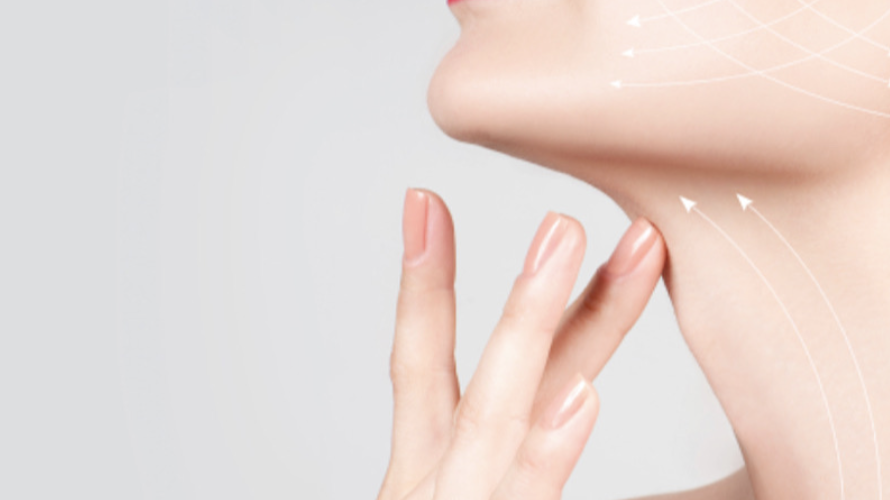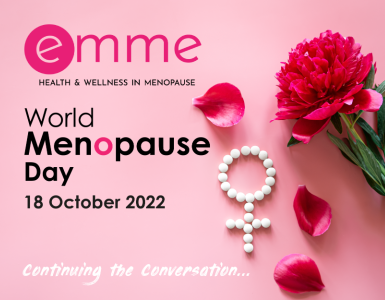As we age, so too does our skin
When we get older and enter perimenopause and menopause, our hormone levels fluctuate and with this brings possible changes to our skin.
Even women who have never had to worry about spots or wrinkles might find that they are struggling with new issues that seemingly pop up overnight.
Women tend to go through menopause between the ages of 45 and 55, but symptoms can start much earlier (or even later).
There is simply no way to predict what these hormone changes will do to your skin
Some women experience oiliness and break outs, while others get dry patches and hollowness.
Here we cover some of the most common ageing skin issues and no matter what your skin,
For many women, the first thing they notice about their skin when entering perimenopause or menopause is that it becomes a lot drier, and starts to feel tight. As your hormones begin to fluctuate, it can compromise the lipid barrier of your skin, causing a decrease in the skin’s natural fatty fluids that keep it plump and supple.While this is a problem for many, if your skin was always too oily, it might be balanced for the first time in your adult life!
How to combat this
Many women rush to creams and moisturisers to combat this problem, but you need to find a product that is rich in lipids to replenish what you are losing– we love Drunk Elephant’s Protini Polypeptide Moisturizer. Another key ingredient to look out for is hyaluronic acid, which can hold more than 1,000 times its own weight in water! It can help moisturise your skin from within, and give you back your glow. Don’t be put off by the word ‘acid’ in its name – it is a very gentle treatment that you can use multiple times per day.
Spots and acne
Looking in the mirror, you might feel like you have transported back to your teenage years – spots and patchy acne can become more common as you enter menopause. As your skin’s lipid barrier breaks down, your cells try to repair the barrier by overproducing sebum. Bacteria flourishes, and you end up with spots. Stress can also lead to breakouts, and the physical and mental changes of menopause can certainly be stressful.
How to combat this
Your natural instinct might be to try to dry your skin out to balance the problem, but that is exactly what you don’t want to do. Your skin is overproducing sebum because it feels like it is losing moisture, so as counterintuitive as it seems, you need to focus on hydration now more than ever. Try cleansing your face with an oil–based cleanser and then gently removing it with a warm flannel – we are partial to Mortar and Pestle Erase Balm. Next focus on serums that contain those hydrating ingredients, like hyaluronic acid, lipids, and ceramides. We love the Beauty Pie monthly membership that allows you to buy loads of high quality serums at bargain prices – I am particularly partial to their Uber Youth Super Serum, which is excellent for hydrating oily, spotty skin.
Dull skin
Sure, you might be concerned about wrinkles and sagging, but dull and tired skin can actually make you look far older than you are. As you reach menopause, dull skin becomes more of a problem because – yet again – of your declining lipid barrier. Even if you have always had radiant skin, you might start to feel like you’ve lost your glow. But you can get it back!
How to combat this
Vitamin C should be in every woman’s skincare regime, asit is an antioxidant that really brightens the skin and helps protect against free radical damage. We love the Oskia Super-C Smart-Nutrient Beauty Capsules –break them open and glide the serum across your skin before you moisturise at night. Another important weapon in the fight against dull skin is a good acid exfoliant. There are many acids to choose from – Lactic, AHA, BHA, and Glycolic. If you don’t want to break the bank, try the Ordinary Line from Deciem. Most of their acid products are priced between £4 -£10, so you can find which works best for you.
Sagging skin
Your fluctuating hormone levels mean a dip in collagen production, which then results in wrinkled and sagging skin. The natural fat deposits beneath your skin start to reduce, which then leaves your skin unsupported. The result is a slackening or sagging that appears as a hollowing in the cheeks.
How to combat this
Many women turn to cosmetic procedures and injectables to overcome their sagging, loose skin. Sadly, no cream is going to be able to fill out your face and overcome this problem completely! That said, there are some amazing products that can reinforce and strengthen the architecture of the skin and improve collagen production. Look for Clarins Ultra Firming line – they’re a ‘firm’ favourite for a reason!
Fine lines
If you reach typical menopause age and you haven’t started to notice fine lines, consider yourself lucky! Fine lines and wrinkles are a fact of life, and while some women have them Botoxed away at their first signs, many of us start to notice an increase in vertical lines, crow’s feet, and smile lines in our 40s and 50s.
How to combat this
The most important thing you can do for your skin at any age is to wear a strong SPF every single time you leave the house. Some women even slather on the SPF when they are near the windows indoors! Sun damage is the leading cause of wrinkles and fine lines (not to mention skin cancer), and it is never too late to become militant about your SPF. Another important component of any skincare regime is an effective eye cream. We’re partial to the Charlotte Tilbury Magic Eye Rescue – remember to pat it on gently with your ring finger so you do not stretch or pull the skin.
Whether you have started to notice these issues, or they are a long way in your future, it’s never too early to take care of your skin.
















